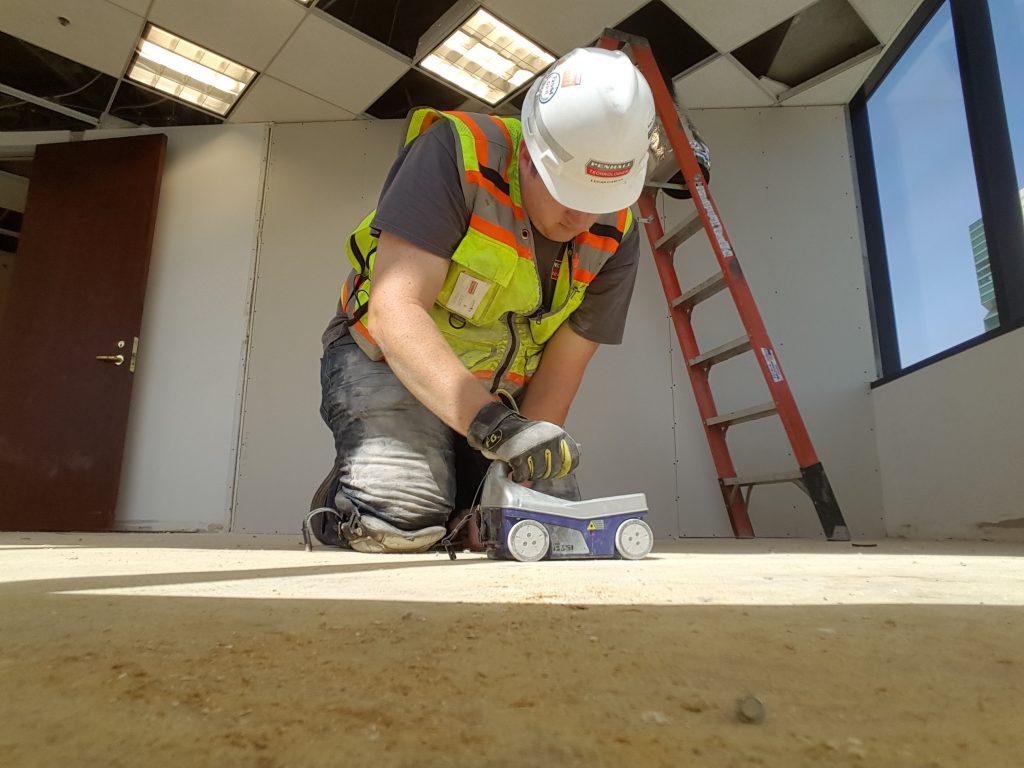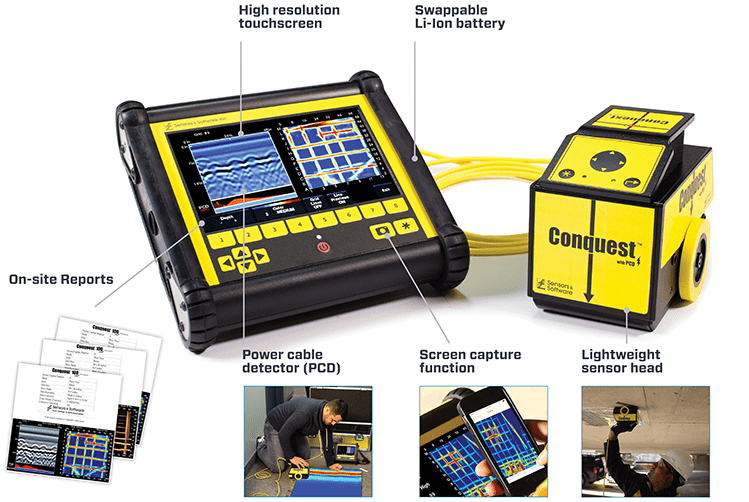Maximizing Performance and Minimizing Dangers: The Role of Concrete Scanning in Building And Construction
In the world of building and construction, where accuracy and safety and security are extremely important, the usage of concrete scanning innovation has ended up being an essential tool for job managers and engineers alike. By taking advantage of innovative scanning approaches, building and construction groups can browse complicated atmospheres with enhanced performance while mitigating potential dangers that might threaten both timelines and spending plans.
Significance of Concrete Scanning
Concrete scanning plays a crucial function in making certain the architectural integrity and safety of building and construction jobs by properly identifying ingrained items and prospective dangers within concrete structures. By utilizing various scanning technologies such as ground-penetrating radar (GPR) and electro-magnetic induction, building and construction teams can recognize rebar, post-tension cords, conduits, and other surprise challenges before exploration, reducing, or coring into concrete. This aggressive technique helps prevent pricey damages, injuries, and task delays that might develop from inadvertently striking these objects throughout building and construction activities.
Furthermore, concrete scanning aids in conformity with security regulations and top quality requirements by offering exact info about the problem of concrete structures. It allows task supervisors and designers to make educated choices regarding architectural modifications, repair services, or reinforcements based upon dependable information obtained with scanning procedures. Furthermore, the specific mapping of embedded items ensures the reliable execution of building strategies, minimizing the danger of mistakes and ensuring the longevity and longevity of the developed setting. Ultimately, investing in concrete scanning services contributes to the total success and safety of building jobs.

Advanced Technology in Building And Construction
Offered the enhancing need for precision and performance in building techniques, the combination of advanced innovation has actually ended up being crucial in improving task outcomes and making certain optimal precaution - RainierGPR Concrete Scanning. One substantial improvement is Structure Info Modeling (BIM), a digital depiction of a structure's practical and physical features. BIM enables much better cooperation among stakeholders, enhanced visualization of the task, and enhanced decision-making throughout the building procedure. In addition, making use of drones in building and construction has changed site surveys, development monitoring, and examinations. Drones provide real-time data, improve security by lowering the demand for workers to access high-risk areas, and improve total task monitoring. Additionally, the application of Enhanced Truth (AR) and Digital Fact (VIRTUAL REALITY) technologies in building layout and drawing board allows stakeholders to picture the end product, identify possible concerns, and make necessary changes before construction begins. These technologies improve processes, decrease errors, and inevitably add to extra reliable and much safer building methods.

Advantages of Object Mapping
The usage of things mapping technology in building tasks offers a wide range of benefits that boost project planning and execution. One of the vital benefits of object mapping is its capability to supply comprehensive and exact information about the place of underground utilities, architectural aspects, and various other things within the construction website. This info is important for making sure that excavation and boring activities are accomplished securely and effectively, reducing the threat of damages to existing facilities.
Additionally, things mapping technology allows building and construction groups to develop precise 3D models of the website, enabling better visualization of the task and enhanced coordination amongst different professions - RainierGPR check this Concrete Scanning. This improved spatial recognition assists to identify possible clashes and conflicts early in the preparation stages, reducing the requirement for costly rework and hold-ups during building and construction
Moreover, things mapping can also enhance the documentation procedure by offering electronic documents of the site previously, throughout, and after construction. These records function as valuable references for future maintenance and improvement tasks, ultimately enhancing the lasting efficiency and sustainability of the built atmosphere.
Stopping Pricey Mistakes
Object mapping innovation's function in building and construction expands past boosting project planning and execution to include a crucial aspect: avoiding expensive errors. By utilizing sophisticated concrete scanning strategies, building and construction groups can recognize potential threats such as rebar blockage, post-tension cables, or voids within concrete structures. Finding these problems beforehand aids in staying clear of costly errors during the construction process. For example, striking a post-tension cord throughout boring can result in structural damage, hold-ups, and boosted expenses for repair work. Additionally, accurately drawing up existing energies underground can stop unexpected damage during excavation, saving both time and money. Furthermore, by making use of things mapping modern technology, building teams can guarantee that building components are installed in the proper places, minimizing the probability of rework or retrofitting because of misplaced aspects. Overall, the aggressive use concrete scanning innovations in construction tasks significantly minimizes the threat of mistakes and eventually contributes to set you back financial savings and task effectiveness.
Ensuring Safety And Security and Quality
To support the highest possible standards of safety and high quality in building and construction tasks, the implementation of concrete scanning innovation plays a crucial function. By using innovative scanning techniques such as ground-penetrating radar (GPR) and electromagnetic induction, building groups can identify potential risks hidden within concrete frameworks prior to starting any work. This positive technique not just decreases the threat of crashes on the construction site but also makes sure the structural stability of the structure.
Concrete scanning additionally assists in verifying the placement of rebar, channels, and post-tension wires, guaranteeing that these elements are properly placed based on the style specs. This precision in locating vital elements helps avoid errors during the building why not find out more process, ultimately bring about a greater top quality ended up item. Moreover, by determining any abnormalities or incongruities within the concrete beforehand, needed modifications can be made quickly, decreasing the possibility of rework and costly hold-ups.
Basically, concrete scanning technology offers as a useful tool in safeguarding both the safety and security of building workers and the total high quality of the built setting. Its capability to guarantee and spot possible risks adherence to layout requirements makes it an important asset in contemporary construction methods.

Verdict
To conclude, concrete scanning plays an essential function in optimizing effectiveness and lessening dangers in building jobs. By making use of innovative modern technology for things mapping, possible expensive errors can be stopped, making sure security and quality of the final framework. It is crucial for building and construction firms to prioritize making use of concrete scanning to boost performance, alleviate dangers, and deliver top quality lead to their tasks.
Concrete scanning plays a critical function in guaranteeing the architectural honesty and safety of building tasks by accurately detecting ingrained things and possible risks within concrete structures. The execution of Enhanced Fact (AR) and Online Reality (VIRTUAL REALITY) innovations in construction style and planning phases enables stakeholders to envision the final item, determine potential issues, and make necessary changes before building and construction begins. By using advanced concrete scanning strategies, construction groups can identify prospective hazards such as rebar blockage, post-tension cables, look at this website or gaps within concrete structures. On the whole, the positive usage of concrete scanning technologies in building and construction projects dramatically reduces the threat of errors and eventually contributes to cost financial savings and project effectiveness.
To maintain the highest requirements of security and top quality in construction jobs, the execution of concrete scanning innovation plays an essential role.
Comments on “Why Select RainierGPR Concrete Scanning for Accurate Subsurface Evaluation”